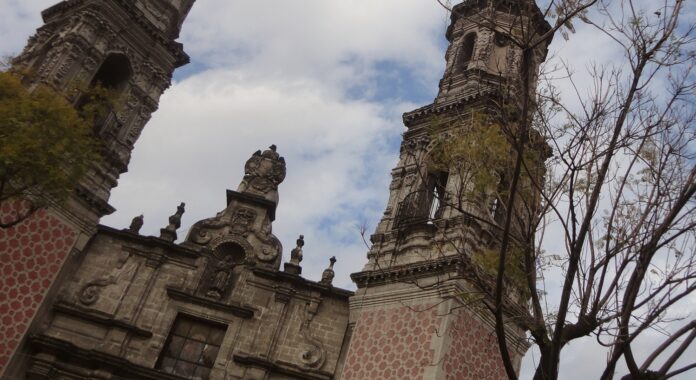by Zurellys Villegas
The Temple of San Hipólito and San Casiano, one of the most important Catholic buildings in Mexico City, stands out for both its impressive architecture and its profound historical value. Located in the first square of the city, this temple is especially known for the popular devotion to Saint Jude Thaddeus, the “saint of difficult causes,” whose figure attracts thousands of devotees every October 28, filling its halls with fervor. However, behind this contemporary fervor, the temple houses a history that dates back to the fall of Mexico-Tenochtitlan and the crossing of cultures and beliefs in colonial Mexico.
The Sad Night: The Origin of the Temple of San Hipólito and San Casiano
The origin of the temple of San Hipólito and San Casiano is intrinsically linked to the famous battle of the Sad Night (or Victorious Night). This confrontation, which occurred during the night of June 30 to July 1, 1520, was a significant defeat for Hernán Cortés and his troops. After the Mexican resistance and the attempt of the conquistadors to escape from Tenochtitlan through the Tlacopan causeway, many Spaniards lost their lives in that tragic retreat.
A year later, in 1521, after the Mexican capital had been conquered, Hernán Cortés ordered the erection of a hermitage in honor of the soldiers who fell during the Noche Triste. This small building, known as the Hermitage of the Martyrs, was built on the same site where the Spaniards had suffered their defeat, and there the remains of those who lost their lives on that fateful night were deposited. Over time, this sacred place would evolve into the Temple of San Hipólito y San Casiano, a place of commemoration that was consecrated in the liturgical calendar to August 13, the date on which the city of Tenochtitlan finally fell under Spanish control.
Devotion to Saint Jude haddeus: A fervor that endures
Today, the Temple of San Hipólito y San Casiano is known above all for being the center of devotion to Saint Jude Thaddeus, a figure that has gained great popularity in Mexico, as well as in other Latin American countries. Every October 28, the temple is filled with hundreds of devotees who come to ask for favors or to give thanks for the miracles attributed to the saint. The faithful bring images, candles and offerings, transforming the temple into a place of faith, spirituality and hope where prayers seek to alleviate the difficult causes and personal problems of its followers.
The phenomenon of devotion to Saint Jude Thaddeus in this temple is relatively recent, as it began to consolidate in the last decades of the 20th century, when parishioners began to see in him a figure of help for impossible causes. Today, the popularity of Saint Jude has grown so much that it is very common to see young people and adults with images of the saint in Mexico City, as well as in other cities around the world.
This sacred space has become a must-see for those seeking to better understand religious syncretism in Mexico and the fusion of cultures that has defined the nation since its origin. In the end, the temple of Saint Hippolytus and Saint Cassian not only represents sacrifice and faith, but also the hope and perseverance of a people who have known how to preserve their traditions throughout the centuries.



